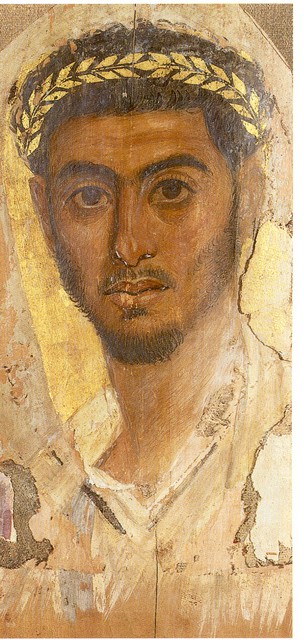Crown of justification on:
[Wikipedia]
[Google]
[Amazon]
 In ancient Egyptian religion, the crown of justification ''(mꜣḥ n mꜣꜥ ḫrw'') was a
In ancient Egyptian religion, the crown of justification ''(mꜣḥ n mꜣꜥ ḫrw'') was a  The crown of justification might be made of laurel,
The crown of justification might be made of laurel,
 In ancient Egyptian religion, the crown of justification ''(mꜣḥ n mꜣꜥ ḫrw'') was a
In ancient Egyptian religion, the crown of justification ''(mꜣḥ n mꜣꜥ ḫrw'') was a wreath
A wreath () is an assortment of flowers, leaves, fruits, twigs, or various materials that is constructed to form a circle .
In English-speaking countries, wreaths are used typically as household ornaments, most commonly as an Advent and Chri ...
or fillet
Fillet may refer to:
*Annulet (architecture), part of a column capital, also called a fillet
*Fillet (aircraft), a fairing smoothing the airflow at a joint between two components
*Fillet (clothing), a headband
*Fillet (cut), a piece of meat
*Fille ...
worn by the deceased to represent victory over death in the afterlife. Its symbolism is based on Chapter 19 of the '' Book of the Dead,'' in which the wearer is said to be "justified" by a triumph over death just as the god Osiris
Osiris (, from Egyptian ''wsjr'', cop, ⲟⲩⲥⲓⲣⲉ , ; Phoenician: 𐤀𐤎𐤓, romanized: ʾsr) is the god of fertility, agriculture, the afterlife, the dead, resurrection, life, and vegetation in ancient Egyptian religion. He wa ...
eventually rose above his enemies. A ritual text was recited as the dead person was crowned.
 The crown of justification might be made of laurel,
The crown of justification might be made of laurel, palm
Palm most commonly refers to:
* Palm of the hand, the central region of the front of the hand
* Palm plants, of family Arecaceae
**List of Arecaceae genera
* Several other plants known as "palm"
Palm or Palms may also refer to:
Music
* Palm (ba ...
, feathers, papyrus
Papyrus ( ) is a material similar to thick paper that was used in ancient times as a writing surface. It was made from the pith of the papyrus plant, '' Cyperus papyrus'', a wetland sedge. ''Papyrus'' (plural: ''papyri'') can also refer to a ...
, or precious metals. It was syncretized with the solar crown of the sun god Re, and might be made of gold to mimic the properties of the sun. Among the collections of the Museum of Fine Arts, Boston, is an intricately woven papyrus wreath with bronze insets to reflect light. In the Roman era
In modern historiography, ancient Rome refers to Roman civilisation from the founding of the city of Rome in the 8th century BC to the collapse of the Western Roman Empire in the 5th century AD. It encompasses the Roman Kingdom (753–509 BC ...
, initiates into the mysteries of Isis
The mysteries of Isis were religious initiation rites performed in the cult of the Egyptian goddess Isis in the Greco-Roman world. They were modeled on other mystery rites, particularly the Eleusinian mysteries in honor of the Greek goddesses D ...
might wear a wreath of palm leaves to suggest the rays of the sun.
In the Ptolemaic Ptolemaic is the adjective formed from the name Ptolemy, and may refer to:
Pertaining to the Ptolemaic dynasty
* Ptolemaic dynasty, the Macedonian Greek dynasty that ruled Egypt founded in 305 BC by Ptolemy I Soter
* Ptolemaic Kingdom
Pertaining ...
and Roman Imperial
The Roman Empire ( la, Imperium Romanum ; grc-gre, Βασιλεία τῶν Ῥωμαίων, Basileía tôn Rhōmaíōn) was the post-Republican period of ancient Rome. As a polity, it included large territorial holdings around the Mediterr ...
periods, religious art
Religious art is artistic imagery using religious inspiration and motifs and is often intended to uplift the mind to the spiritual. Sacred art involves the ritual and cultic practices and practical and operative aspects of the path of the spiritu ...
in temples
A temple (from the Latin ) is a building reserved for spiritual rituals and activities such as prayer and sacrifice. Religions which erect temples include Christianity (whose temples are typically called churches), Hinduism (whose temples ...
shows the king offering the crown to Horus or other deities. These crowns of justification take the form of a circlet
A circlet is a piece of headwear that is similar to a diadem or a corolla. The word 'circlet' is also used to refer to the base of a crown or a coronet, with or without a cap. Diadem and circlet are often used interchangeably, and 'open crowns' ...
, which sometimes has a uraeus
The Uraeus (), or Ouraeus (Ancient Greek: , ; Egyptian: ', "rearing cobra"), ''(plural: Uraei)'' is the stylized, upright form of an Egyptian cobra, used as a symbol of sovereignty, royalty, deity and divine authority in ancient Egypt.
Sym ...
or wedjat-eye. Rose wreaths might be substituted during the Roman period, in reference to the use of rose garlands and wreaths in the Romanized mysteries of Isis. The crown of justification was in this way integrated into the broader festal and religious uses of floral and vegetative wreaths in the Roman Empire.Riggs, ''The Beautiful Burial in Roman Egypt,'' pp. 82–83.
See also
*Crowns of Egypt
The Egyptian civilization used a number of different crowns throughout its existence. Some were used to show authority, while others were used for religious ceremonies. Each crown was worn by different pharaohs or deities, and each crown had its o ...
* Crown of Immortality
References
{{Ancient Egyptian religion footer Crowns (headgear) Ancient Egyptian funerary practices